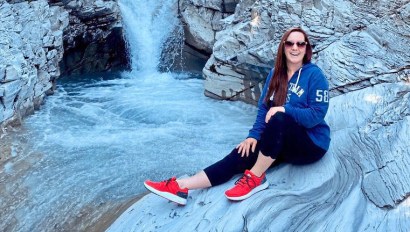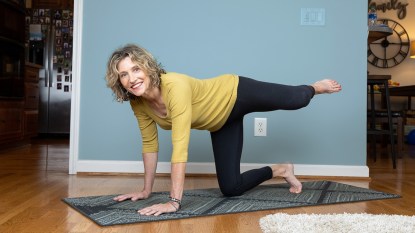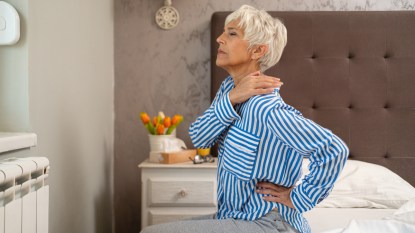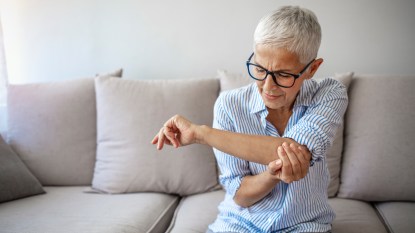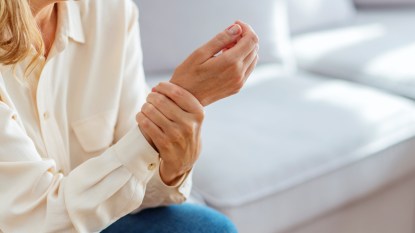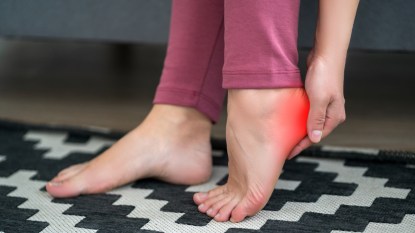The Surprising Link Between Estrogen and Foot Pain
The good news: You can sidestep soreness with these tips.
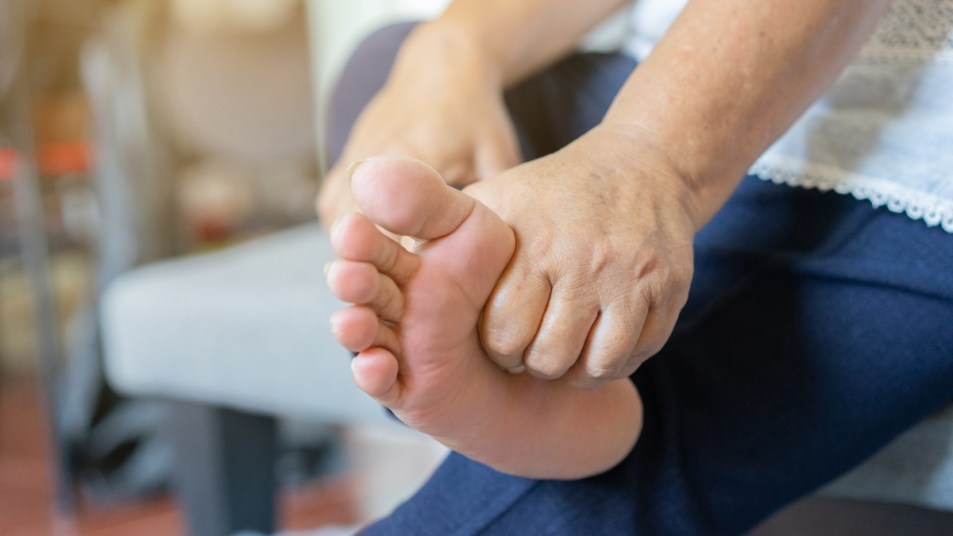
Did you know that there’s a link between menopause and foot pain?
It’s true: Changing estrogen levels can lead to collagen loss, which means your feet have a little less strength in the bones, ligaments, and tendons. Everything gets a little less elastic, causing all kinds of issues —constricting blood vessels, joint pain, a slower healing process, you name it. And what makes matters worse? Fall is prime time for foot pain: Switching from comfy slip-ons to wedged boots and tight-fitting shoes can cause anyone’s feet to suffer.
Podiatrist Doug Tumen, DPM and author of Ask the Foot Doctor, confirms that menopause is a big factor in foot pain. In fact, he says that women suffer four times more foot pain than men. But aging (and the natural tendency to put on a few pounds as we do so) also plays a role: Not only do the natural “shock absorbers” (a.k.a. fat pads) on the balls of our feet thin with every extra birthday candle we blow out, for every pound we weigh, 1.5 pounds of pressure is exerted on the foot, says Dr. Tumen. So for a 175-pound woman, every step feels like 263 pounds of pressure.
The good news: You can sidestep soreness — no matter what’s causing your pain — with the following easy strategies. We reached out to experts, who share simple steps to ease the ache so you can put your best foot forward.
Heel pain? Try a bed stretch.
Heel pain is often caused by plantar fasciitis, a condition marked by inflammation of the band of the fascia (the ligament that runs along the bottom of the foot). It’s more common in women over 40, says podiatrist Jacqueline Sutera, DPM., and loose-fitting shoes like slip-ons increase the risk of problems. The fix? A simple stretch. “Stretching the calf pulls on the fascia, reducing pain,” she says. “Fascia tightens overnight, so it’s best to stretch in the morning — you can do it in bed,” says Dr. Sutera. To do: Extend your leg in front of you and use a towel to gently pull your toes toward your knees. Hold for 15 seconds; release. Do three sets of 10.
(Note: Studies have not confirmed that calf stretching helps reduce plantar fasciitis pain. Talk to your doctor for a customized treatment plan.)
Bunions? Try this ‘handshake’.
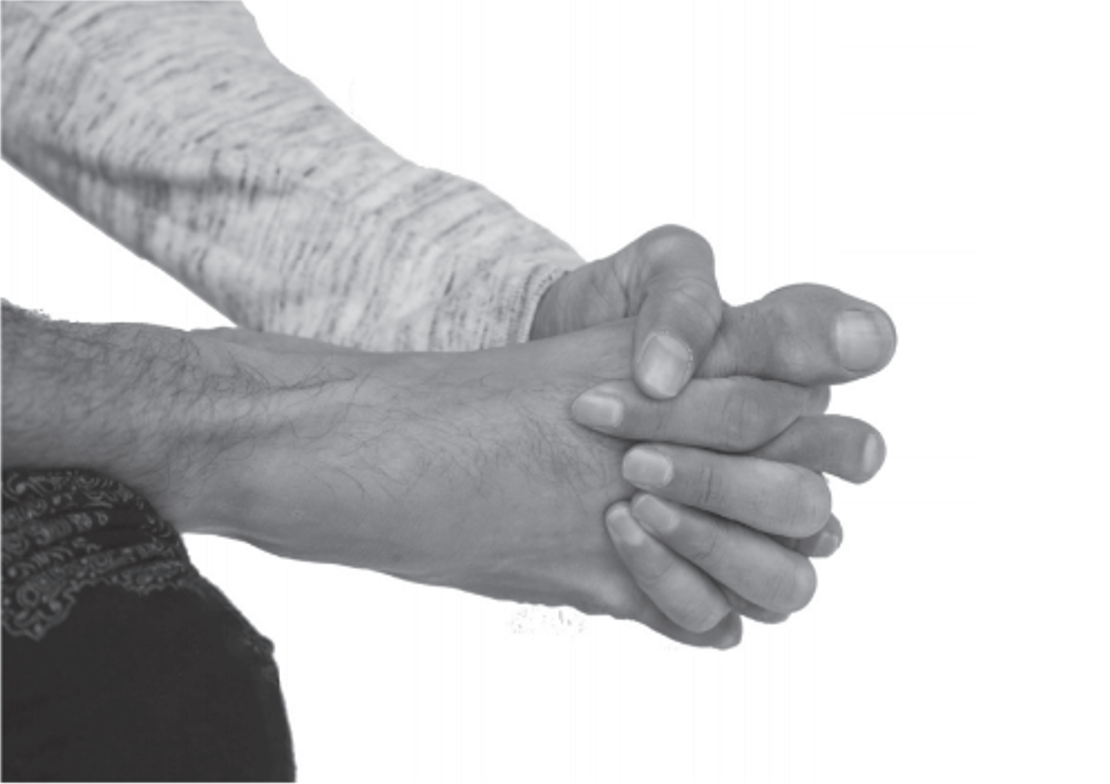
Some women over 65 live with bunions, bony bumps that form at the base of the big toe, causing pain. “Bunions are highly hereditary, and while we can’t get rid of them without surgery, we can slow their progress and ease pain,” says Dr. Tumen. How? Biomechanist Katy Bowman, author of Simple Steps to Foot Pain Relief, advises doing this easy exercise a few times a day: Sit down and rest your affected foot on your other knee. Place your fingers between each of your toes, starting at the tips of your toes, and working your way down between them until your fingers “hold hands” with your feet. Says Bowman: “Doing this for a few minutes a couple of times a day reduces pain.”
Also smart: Rub on an anti-inflammatory gel. “Diclofenac gel used to be a prescription that cost hundreds of dollars, but it’s now available over the counter for under $20,” says Dr. Sutera. “It alleviates plantar fasciitis and bunions.”
Pain near your toes? Walk on clouds.
“The best remedy for pain in the balls of your feet, which can be caused by high heels or standing too long, is to add extra cushioning in the form of a metatarsal pad,” says Dr. Sutera. (One to try: ZenToes Metatarsal Pad — Buy from Amazon, $12.99). Also soothing, says Dr. Sutera: “Massaging the foot by gently rubbing your thumbs behind the toes in a circular motion will boost blood f low to your feet, decreasing pain.”
A version of this article originally appeared in our print magazine, First for Women.



